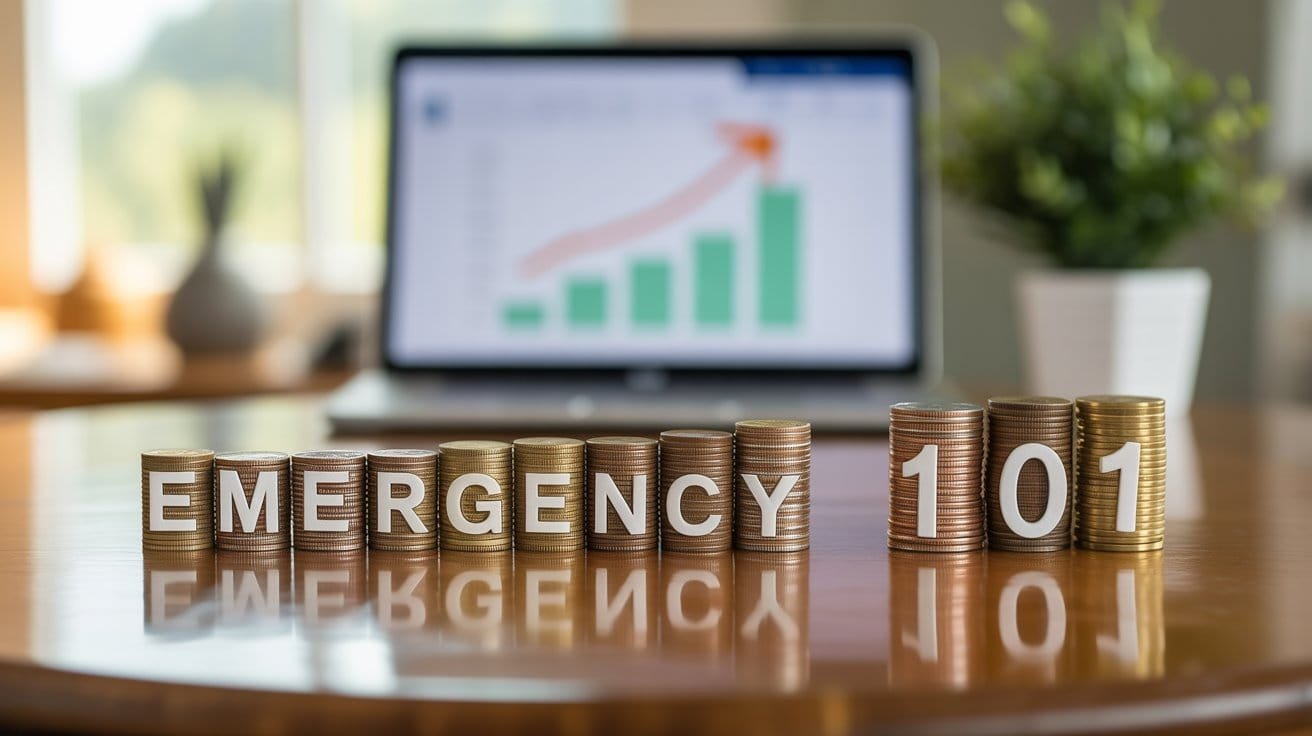Emergency Fund 101: Why You Need One and How to Build It 🛡️
Your financial safety net for life’s unexpected twists
An emergency fund is your financial lifeline — a stash of cash that keeps a minor setback from spiraling into chaos. Think sudden medical bills, car repairs, or a job loss. This guide breaks down why you need one, how much to save, where to keep it, and a clear plan to build it — all in straightforward, actionable steps. 🚀
Why an Emergency Fund Matters 📈
- Shields you from debt: Pay for surprises without leaning on high-interest credit cards or loans. 💳
- Eases your mind: Knowing you’re covered for unexpected costs reduces stress and sharpens decision-making. 🧘
- Grants freedom: Walk away from a toxic job or take smart risks without fear. 🌟
- Safeguards goals: Protect your dreams — like retirement or a home purchase — from being derailed by one crisis. 🏡
Real-world scenarios: A missed paycheck, an urgent medical bill, or a broken water heater are exactly what your emergency fund is for. 🛠️
How Much Should You Save? 💰
Here’s a practical guide to sizing your emergency fund based on your situation:
Rules of Thumb
- Stable job? Aim for 3–6 months of essential expenses.
- Freelancer or unstable income? Target 6–12 months.
- Single-income family or high fixed costs? Lean toward 6–12 months.
- High-risk job or limited insurance? Consider 12 months or more.
What’s “essential”? Rent/mortgage, groceries, utilities, insurance, minimum debt payments, transportation, and basic childcare — the must-pay bills. 📋
Example Calculation
Let’s say your monthly essentials total $2,500. Here’s how it breaks down:
3 months: $2,500 × 3 = $7,500
6 months: $2,500 × 6 = $15,000
To hit $7,500 in 12 months: $7,500 ÷ 12 = ~$625/month. 🧮
Emergency Fund Targets
3 Months
$7,500
6 Months
$15,000
Where to Keep Your Emergency Fund 🏦
Prioritize liquidity and safety over chasing high returns. Here are your best options:
- High-yield savings account (HISA): Instant access with decent interest. Your go-to choice. ✅
- Money market account: Slightly higher yields, still liquid (check withdrawal rules). 📊
- Short-term CDs (laddered): Higher rates, limited access — stagger maturities for flexibility. 🕒
Avoid: Stocks, crypto, or long-term bonds — they can crash when you need cash most. 🚫
Pro tip: Keep your fund separate from your checking account to resist spending it. 🔒
Step-by-Step Plan to Build Your Fund 📝
- Know your number: List essentials, multiply by 3–12 months. ⏳
- Set a timeline: 30 days for a starter fund, 3 months for a sprint, or 12 months for steady progress. 🏃
- Automate savings: Set up a separate account with auto-transfers each payday. 🤖
- Trim expenses: Cut one subscription or cook more — redirect savings. 🍽️
- Use windfalls: Tax refunds or bonuses can fast-track your goal. 💸
- Grow sensibly: Switch to a better HISA if rates improve, but keep it accessible. 📈
- Protect & replenish: Use only for emergencies and rebuild quickly. 🛠️
12-Month Plan Timeline
Month 1
Start: $625
Month 4
$2,500
Month 8
$5,000
Month 12
$7,500
Quick Wins to Boost Savings ⚡
- Round-up apps: Save spare change by rounding up purchases. 🪙
- Pause subscriptions: Cancel unused services to free up cash. 📺
- Micro side-gigs: A few hours of freelancing can jumpstart your fund. 💼
- Sell unused items: Declutter and add hundreds to your savings. 🧹
When to Use Your Emergency Fund 🚨
Use it for: Job loss, medical emergencies, urgent home/car repairs, or family-related travel.
Don’t use it for: Impulse buys, non-urgent trips, or lifestyle upgrades.
After use: Rebuild quickly with a clear timeline (e.g., 6 months). 🔄
Common Mistakes to Avoid 🙅
- Mixing goals: Keep emergency funds separate from vacation or furniture savings. 🗂️
- Risky investments: Avoid stocks or crypto — they can tank when you need cash. 📉
- Slow timelines: A 5-year plan saps momentum; aim for smaller, faster goals. 🐢
- No refill plan: Using the fund without rebuilding undermines its purpose. 🕳️
Advanced Tips for Savvy Savers 🧠
- Prioritize insurance: Good coverage for health or property lowers your fund needs. 🩺
- Multiple buckets: Pair your emergency fund with sinking funds for planned expenses. 🗃️
- Watch inflation: Periodically move to higher-yield, liquid accounts. 📈
Your Action Plan Checklist ✅
- Calculate essential monthly expenses.
- Choose target (months × expenses).
- Open a high-yield savings or money market account.
- Automate monthly transfers.
- Trim one or two expenses and redirect savings.
- Commit a portion of windfalls/bonuses.
- Revisit and adjust every 6–12 months.
Frequently Asked Questions ❓
Should I pay off debt or build an emergency fund first?
Start with a small emergency fund (one month of expenses) while tackling high-interest debt. Once debt is manageable, build your full fund. 🏦
Is 3 months always enough?
Not always. If your income is unstable, you’re self-employed, or the sole earner, aim for 6–12 months. 📅
Can I use a credit card as an emergency fund?
No. Credit cards can lead to costly debt. Only use them if you can pay the balance immediately. 💳
What if I can’t afford monthly contributions?
Start small — even $10/week builds momentum. Use windfalls or round-up apps to grow it faster. 🪙
Final Thought 🌟
An emergency fund is simple but transformative. It gives you time, options, and peace of mind. Start small, automate, and protect it — and watch your financial confidence grow. 🚀
